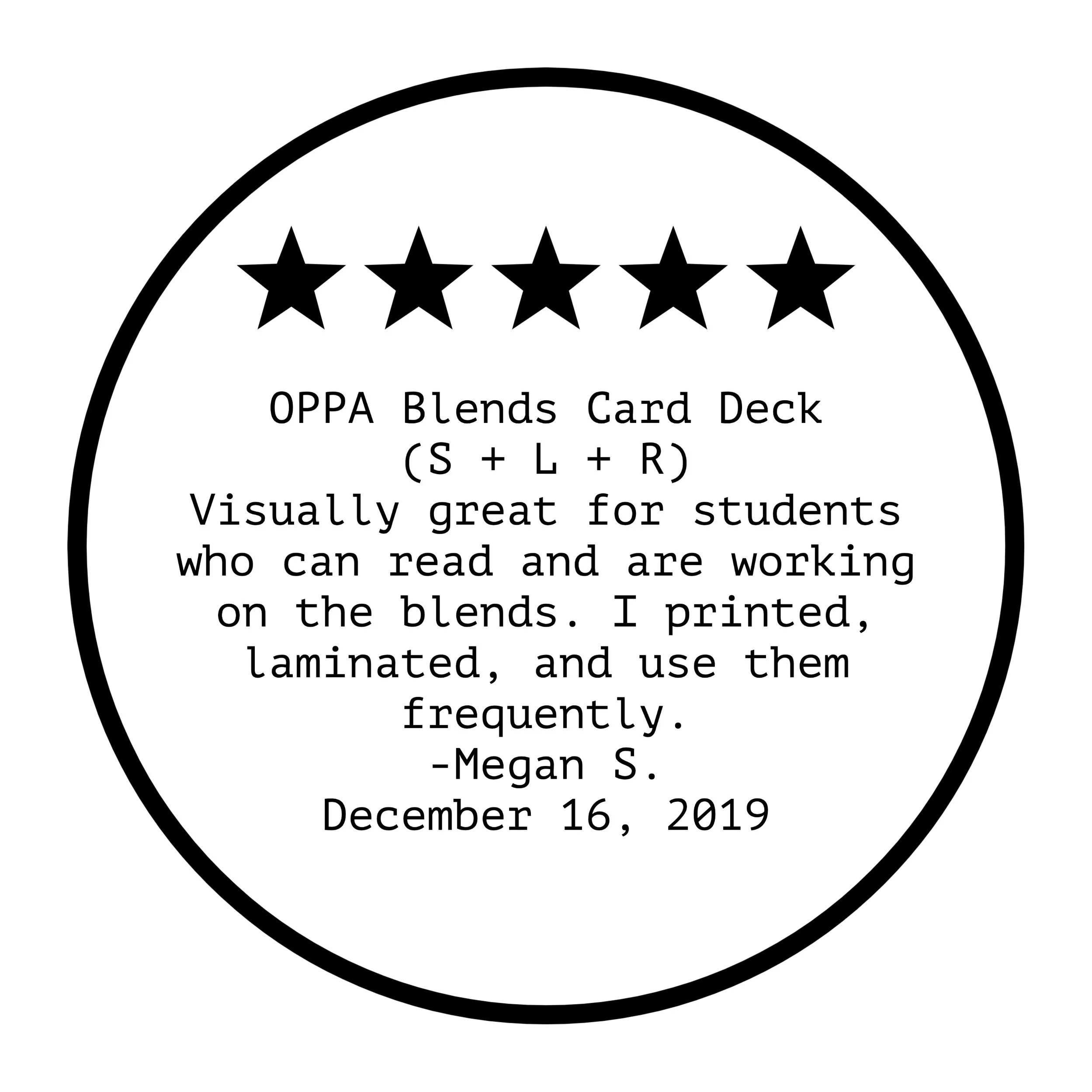TIKANIS
I am ZARAS and this is my world of print-rich speech therapy resources for parents, teachers, and speech-language pathologists.
What is OPPA®?
OPPA® is not just another word list or deck of cards for speech sound intervention. In Greek, the expression “opa” is an exclamation of celebration. OPPA® is the celebration of the connection between reading and speaking. Created by an ASHA Certified Speech-Language Pathologist, OPPA® facilitates the simultaneous development of skilled reading and articulation through the pillars of motor learning. OPPA® is suitable for the school-age population; however, OPPA® may also be presented orally to individuals who are learning to read. Individual results may vary due to the unique nature of speech sound mispronunciations and/or reading difficulties.
Why OPPA®?
The American Speech-Language Hearing Association (ASHA) explains that 11% to 40% of children diagnosed with speech sound disorders also exhibited language impairments(Eadie et al., 2015; Shriberg et al., 1999). ASHA further cites that speech sound production difficulties in kindergarten are associated with decreased literacy achievements (Overby, Trainin, Smit, Bernthal, & Nelson, 2012).
-
Arranging the stimuli in a predictable context. OPPA® Drill Book I and OPPA® Articulation Cards incorporate blocked practice in the word lists.
-
Arranging the stimuli in unpredictable contexts. OPPA® Drill Book I and OPPA® Articulation Cards incorporate random practice in the phrase and sentence lists.
-
Word Recognition involves phonological awareness, decoding, and sight recognition.
-
Language Comprehension involves background knowledge, vocabulary, syntax, semantics, verbal reasoning, and literacy knowledge.
-
Skilled Reading is the automatic and simultaneous act of recognizing and understanding the written code of language.
-
Can print rich speech-language therapy materials be used with non-readers?
Absolutely! Just because a child does not read yet, does not mean that you cannot read to them. For example, using the written format of articulation sounds provides the opportunity to practice phonological awareness and/or phonemic awareness with your child. Read the word to them and have them imitate your models.
Why do you put “and” in all of your articulation phrases?
“And” actually promotes random practice. The purpose of the phrase and sentence cards in my articulation decks is to help your child generalize accurate articulation to the conversational or connected speech level.
The little word “and” happens to be very frequently used in the English language. EnglishClub lists “and” as the #1 most common conjunction.
“And” is in our English language because, well, we as humans do not typically speak in single or isolated words. I have first-hand experience with children who can tell me “the-the-the” many times in a row with excellent accuracy; however, as soon as we add the word “and” in-between (example: “the and the”), accuracy declines. It is in my clinical view that “and” repositions the articulators (in the case of “the” would involve a change in tongue position) which mimics the quick reposition that must occur during connected speech or conversational speech.
Why do you use print rich materials in speech and language intervention?
At first it was developed out of necessity—many of my students with articulation and language deficits were struggling with reading. On the flip side, I also had many students who could read but they did not always understand what they were reading. I found that the best way to connect speaking and reading and language was to actually, read.
HUNDREDS OF TARGETS
ALSO AVAILABLE IN PRINT
RESEARCH
American Speech-Language-Hearing Association. (n.d.). Speech sound disorders: Articulation and phonology. Speech Sound Disorders: Articulation and Phonology. Retrieved July 27, 2022, from https://www.asha.org/practice-portal/clinical-topics/articulation-and-phonology/#collapse_8
Eadie, P., Morgan, A., Ukoumunne, O. C., Eecen, K. T., Wake, M., & Reilly, S. (2015). Speech sound disorder at 4 years: Prevalence, comorbidities, and predictors in a community cohort of children. Developmental Medicine & Child Neurology, 57, 578–584.
Esperger, J. (n.d.). 25 most common conjunctions. EnglishClub. Retrieved September 25, 2021, from https://www.englishclub.com/vocabulary/common-conjunctions-25.htm.
“Language, Reading, and Learning in School: What the Speech-Language Pathologist Needs to Know.” Language Disorders from Infancy through Adolescence: Listening, Speaking, Reading, Writing and Communicating, by Rhea Paul and Courtenay Frazier Norbury, Mosby, 2012, pp. 409–411.
Maas, E., Robin, D.A., Austermann Hula, S.N., Freedman, D.E., Wulf, G., Ballard, K.J., & Schmidt, R.A. (2008). The principles of motor learning in treatment of motor speech disorders. American Journal of Speech-Language Pathology, 17, 277-298.
Overby, M.S., Trainin, G., Smit, A. B., Bernthal, J. E., & Nelson, R. (2012). Preliteracy speech sound production skill and later literacy outcomes: A study using the Templin Archive. Language, Speech, and Hearing Services in Schools, 43, 97–115.
“The Reading Rope” from Scarborough H. (2003). Connecting early language and literacy to later reading disabilities: evidence, theory, and practice. S. Newman & D. Dickenson (Eds.) Handbook of Early Literacy Research (pp. 97-110). New York: Guilford Press.
Shriberg, L. D., Tomblin, J. B., & McSweeny, J. L. (1999). Prevalence of speech delay in 6-year-old children and comorbidity with language impairment. Journal of Speech, Language, and Hearing Research, 42, 1461–1481.



































